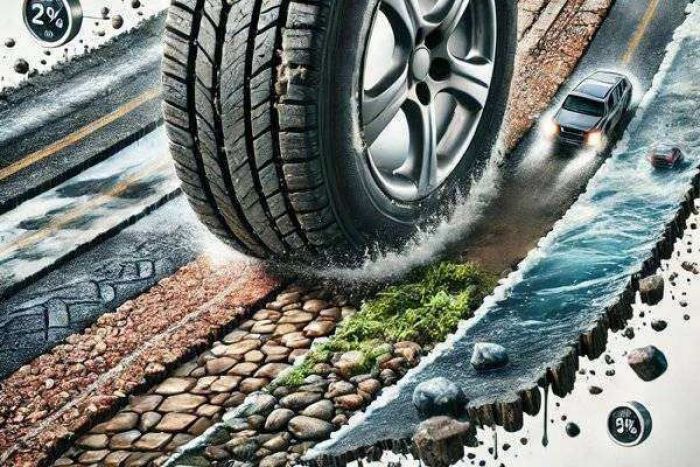If you have noticed that your car is leaking coolant while driving or parked, it is essential to take immediate action. Drivers who fail to investigate and fix the cause of their overflowing coolant end up with expensive engine repairs on their hands. Do not let that happen to your precious ride.
Cooling system problems highlights
- Level of urgency: high
- Common reasons: bad antifreeze, broken cooling equipment, leaks
- DIY diagnostics: very complicated
- DIY repair: impossible
- Price of repair: $250 - $650
- Time for repair: 3 - 8 hours
- If ignored: engine overheating and failure

Can You Drive When Suffering a Coolant Reservoir Overflow
It is not advisable to drive your car once you discover that the coolant reservoir is overflowing. While the malfunction does not pose a serious safety or driveability issue, there are several reasons why you should not ignore it.
All cars with a liquid cooling system depend on antifreeze, commonly called coolant, to regulate temperatures. This toxic substance ensures that your car's engine components remain at optimal temperature for efficient functioning. It would be best if you fixed a coolant overflow immediately because it poses a risk to your health, the car's engine, and the environment.
How Your Car's Cooling System Operates
Your car's cooling system consists of a thermostat, rubber coolant reservoir, hoses, radiator, and fan. The coolant leaves the reservoir through a pipe network and passes through your radiator before it reaches your hot and eager engine's components.
The radiator functions alongside the liquid cooling system to carry away excess heat from your engine. The coolant travels from the radiator and through your entire engine block to absorb excess heat before it returns to the radiator.
Here, thin metallic fins lower the coolant's temperature by distributing its heat to the atmosphere. The cool air that enters your radiator through the grill aids this process. Whenever the car is idling, your fan will kick in to blow the hot air away from the radiator.
After the radiator cools your coolant down, it is sent to the engine block to begin the cycle afresh. Every component in this heat transfer cycle must work optimally for your engine to perform efficiently for as long as projected in the owner's manual.
Typical Symptoms of Coolant Reservoir Overflow
Most drivers wait until their car overheats to consider that it may have a coolant reservoir overflow problem. Unfortunately, by the time your car overheats, the overflow has probably been occurring unchecked for quite a while.
These symptoms will help you recognize the most common warning signs of coolant reservoir overflow:
- Your heater is not working as it used to - since your car's heater relies on the cooling system, a reservoir overflow will undoubtedly affect its output.
- Your temperature gauge indicates a higher or lower-than-optimal reading
- A sweet smell originating from your car's hood
- Your coolant warning light begins to flash
- Increased fuel consumption
When ignored, coolant problems are guaranteed to result in expensive engine repairs. Save yourself time, money, and peace of mind by booking a thorough diagnosis as soon as you notice any of these symptoms.
Common Causes of Coolant Reservoir Overflow
There could be various problems behind the pool of coolant slicking up your parking spot in the garage. The most common causes of coolant reservoir include:
- Overfilling your coolant reservoir
- A defective radiator cap
- A malfunctioning head gasket
Determining the overflow type (internal versus external) is a bit simpler than isolating its source. External overflow is the most commonly addressed type, as it is hard to ignore the puddle under or streak trailing your car. Most drivers rely on their dealerships or reputable auto repair shop to track and fix the cause of their coolant reservoir overflow.
If you want to avoid facing this problem, to begin with, develop a habit of checking your coolant reservoir every time you fill up your gas tank. Whether you had rather DIY or want to visit the mechanics already armed with an arsenal of information, these common problems are the best places to begin your investigation.
1. Excessive Coolant Levels
This one may seem a bit obvious, but overfilling your coolant reservoir is a classic case of overflow. It is possible for your car to have too much of a good thing - in this case, coolant. Always look out for the two maximum coolant reservoir tank markers. One shows the maximum level when a cool system is, and the other indicates the optimal level for a hot system that has been running for a while.
Overfilling the coolant causes it to get expelled through the overflow hose. Overflowing coolant will damage the environment and your health should you unknowingly come into contact with it. If the excess coolant does not leave the system through the overflow tube, it will cause internal problems like
- Pressure build-up due to lack of space for expansion of the coolant when it heats up. If left to simmer, this will cause your radiator cap to bow to the pressure and pop off to let out the pressurized coolant.
- Electrical malfunction - should the overflowing coolant come into contact with your engine's electrical wiring, all sorts of electrical trouble are likely to follow. This includes battery leaks, underperformance, and failure of electrical components like headlights and radio.
- Environmental damage occurs when the toxic overflowing coolant comes into contact with animal or plant life.
Solution
Consult your owner's manual to discover your car's ideal amount of coolant. Alternatively, please pay close attention to the physical markings on the reservoir and never exceed them.
2. Loose or Damaged Radiator Cap
This is the most common cause of coolant reservoir overflow. Since modern cooling systems are pressurized, elements like the radiator cap must fit just right for the system to work as envisioned. As the system heats up, the coolant and air expand, thus increasing the system's pressure.
Your radiator cap helps to regulate the high pressures achieved to prevent damage to the hoses and radiator. When the system is hot and under pressure, the cap expands to contain the heat and pressure. Switching off the engine cools the system, contracts the coolant, and causes the cap's return valve to suck in atmospheric air or extra coolant (in vehicles fitted with an expansion tank).
If your radiator cap is incompatible, loose, worn out, weak, or fits improperly, it is likely to allow coolant to escape through the overflow tube. This is most likely to happen during long or demanding drives. Additionally, a malfunctioning radiator cap will also lose pressure and damage your hoses creating a further likelihood of coolant reservoir overflow.
Coolant is likely to overflow through the engine freeze plug if your radiator cap is no longer functioning due to corrosion or being stuck in place.
Solution
If your suspect your radiator cap is behind your coolant reservoir overflowing, a simple pressure test will help to diagnose the problem. If your radiator cap proves to be malfunctioning, you should replace it with a compatible OEM alternative. Alternatively, you can check your owner's manual for the proper cap specifications and pressure settings to purchase a high-quality compatible after-market option.
3. Defective Head Gasket
If you suspect that your coolant reservoir is overflowing but have not encountered any wet patches under the parking spot, the most likely cause is a malfunctioning head gasket. Your head gasket performs the vital job of sealing your cylinder heads and engine block.
Whenever your head gasket fails, it will likely suffer a major or minor coolant leak. Considering that your engine is not yet overheating, all signs indicate a minor leak. A malfunctioning head gasket risks overflowing coolant mixing with your engine oil, whether minor or significant. This would stall your car due to a catastrophic failure caused by loss of compression.
The most common sign of a failing gasket is an overheating radiator that seems to have an insatiable thirst for water. No sooner than you refill it shall it overheat and demand another refill.
Solution
Drivers should replace a failing head gasket as soon as they realize the problem. You are advised to visit your dealership or a trustworthy mechanic because the replacement process will require engine disassembly and reassembly. This a delicate task that well-trained and highly experienced hands should perform. Be ready to part with a pretty penny for labor costs and the purchase of a genuine OEM head gasket.
About the authors
The CarAraC research team is composed of seasoned auto mechanics and automotive industry professionals, including individuals with advanced degrees and certifications in their field. Our team members boast prestigious credentials, reflecting their extensive knowledge and skills. These qualifications include: IMI: Institute of the Motor Industry, ASE-Certified Master Automobile Technicians; Coventry University, Graduate of MA in Automotive Journalism; Politecnico di Torino, Italy, MS Automotive Engineering; Ss. Cyril and Methodius University in Skopje, Mechanical University in Skopje; TOC Automotive College; DHA Suffa University, Department of Mechanical Engineering






Add comment